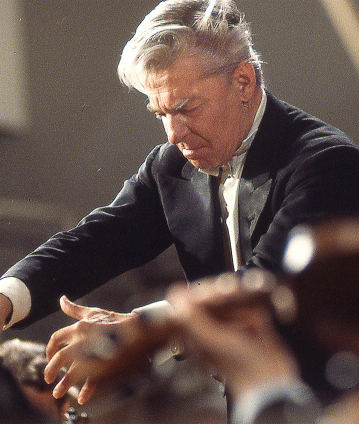Karajan conducts Ravel and Debussy

Herbert von Karajan was a master of the fine blending of acoustic colours. This quality is shown to its best advantage in this programme of masterpieces of French Impressionism. Works include Debussy’s multifaceted La Mer, and his lascivious, dream-like Prélude à l’après-midi d’un faune, and Ravel’s Suite No. 2 from Daphnis et Chloé, a work which combines shimmering transience with uncompromising energy.
During the 30-year-old Herbert von Karajan’s first encounter with the Berliner Philharmoniker in April 1938, he asked for separate sectional rehearsals in the suite from Ravel’s ballet Daphnis et Chloé. The players were not amused, claiming that they knew the piece perfectly well. Karajan recalled: “With all the impudence of youth, I replied, ‘Well, we’ll see, shall we?’. I then went straight to the hardest sections with the violas, and they couldn’t manage them at all.” The performance was a triumph. Berlin’s most respected independent critic Heinrich Strobel wrote that he could not recall hearing a more atmospheric, more brilliantly coloured or more dazzlingly exact reading than this.
It was Karajan’s aim during his 33 years with the Berliner Philharmoniker, which he took over from Wilhelm Furtwängler in 1955, to create individual sound “palettes” for individual composers, and nowhere more so than in the music of such early 20th-century masters as Debussy, Ravel, Sibelius, Strauss and Puccini. His conducting of Debussy’s haunting and musically revolutionary Prélude à l’après-midi d’un faune was widely admired by fellow musicians. The distinguished Wagner conductor Reginald Goodall marvelled at a performance which was “ice-cold” yet which also conveyed what he called “the heat of the hot, burning Grecian sun”. It is extremely instructive to watch Karajan conducting this work or a larger-scale piece such as Jeux de vagues from La Mer (which, as a keen sailor, he was particularly fond of). The recording was made in 1978, the year in which he finally recorded in Berlin a work which was also very close to his heart, Debussy’s death-haunted opera Pelléas et Mélisande.
© 1980 Unitel
Artists
Our recommendations
- Karajan conducts Tchaikovsky’s Symphonies Nos. 4–6
- Karajan conducts Bach
- Karajan conducts Beethoven’s Ninth Symphony
- Herbert von Karajan and Evgeny Kissin at the 1988 New Year’s Eve Concert
- Karajan conducts Beethoven’s Symphonies Nos. 1 & 4
- Performance and conversation: Karajan conducts Dvořák’s Symphony No. 9